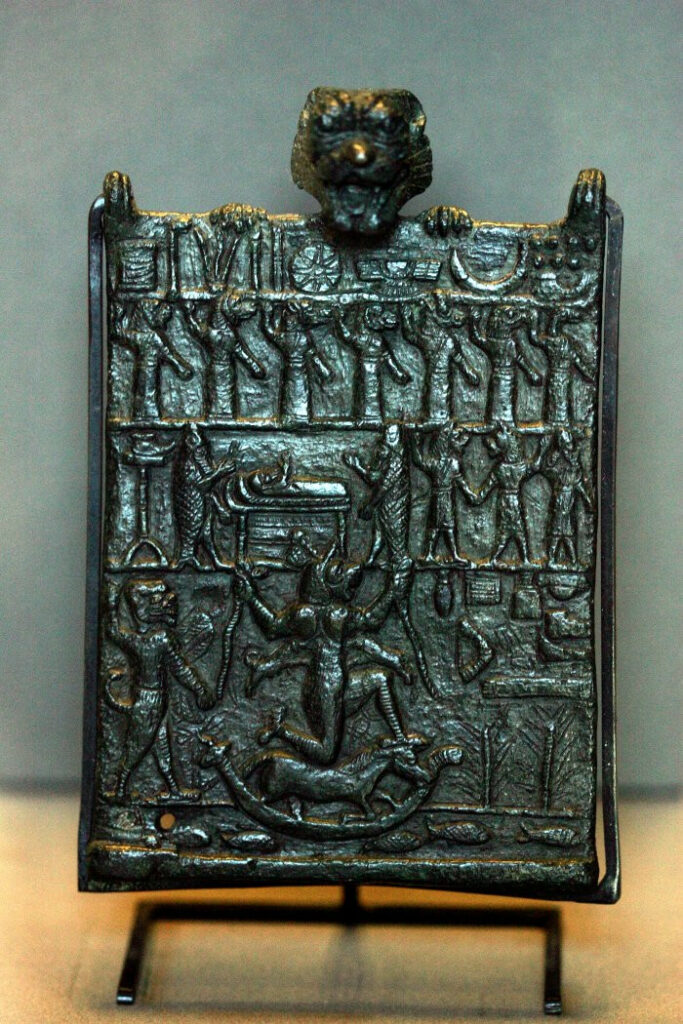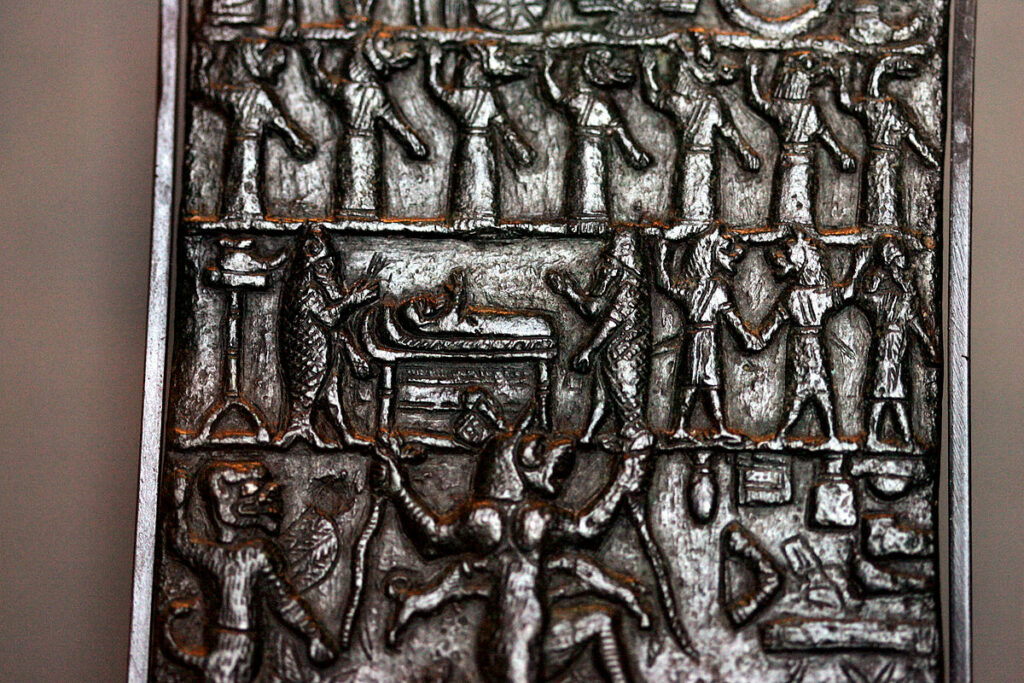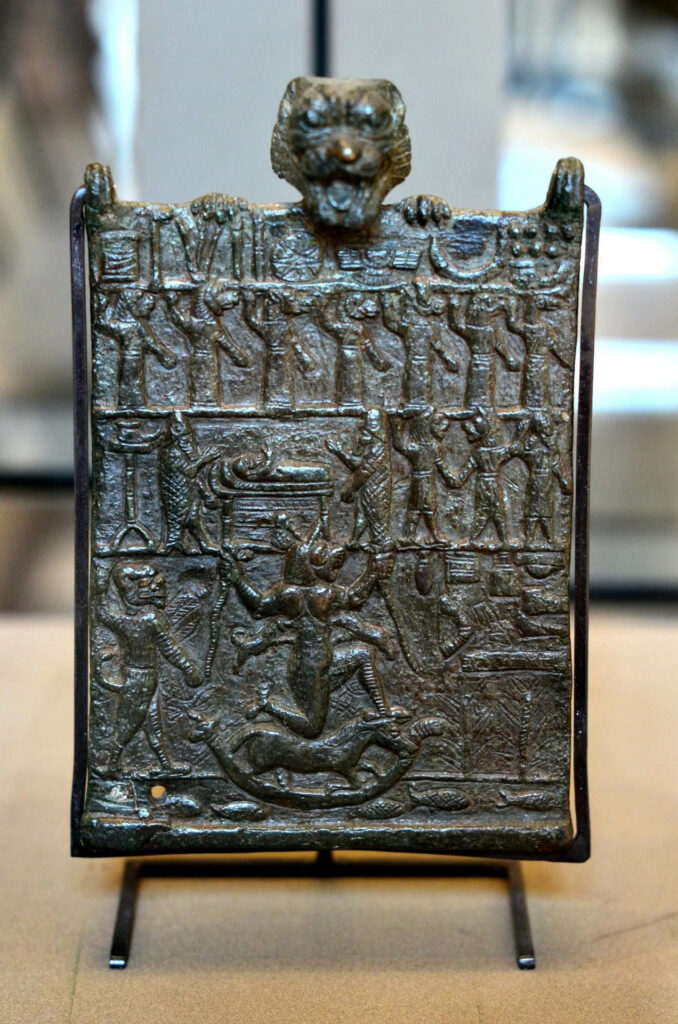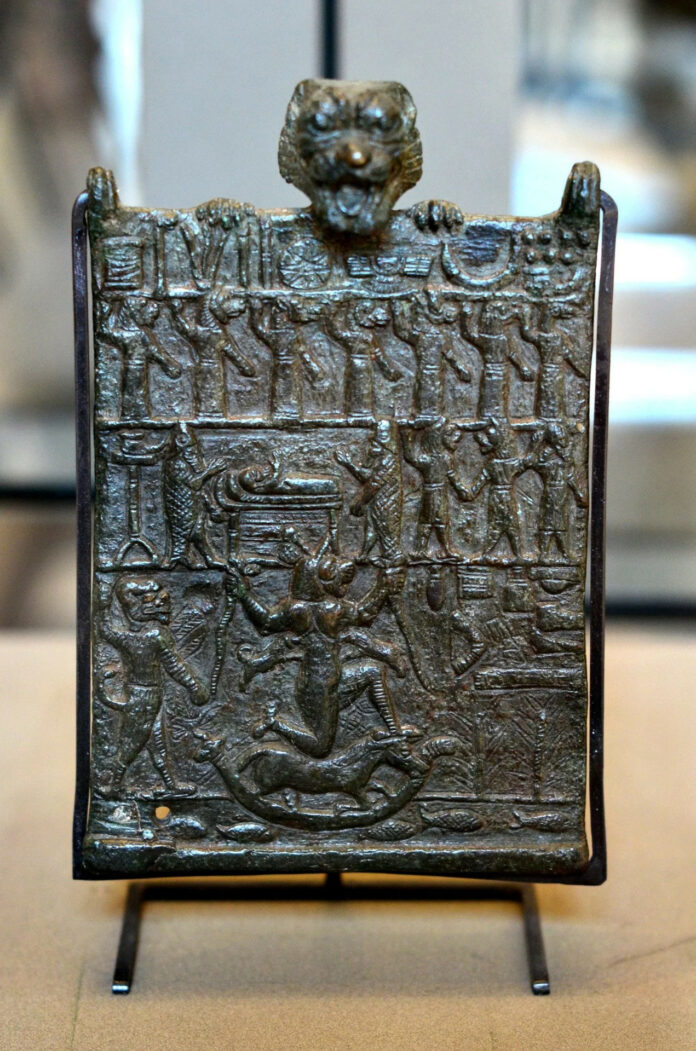The Demon Queen and Her Protective Counterpart
In the mystical realm of ancient Mesopotamia, a fearsome demon queen named Lamashtu struck terror into the hearts of mortals. Known as “she who erases,” this malevolent entity was blamed for a multitude of horrors: the deaths of children and mothers, the poisoning of water, the destruction of plants, and the consumption of human flesh and blood. With her lioness head, donkey teeth and ears, and bird-like talons, Lamashtu embodied the nightmares that plagued the ancient world.

The Plaque: A Shield Against Darkness
To combat this terrifying force, the Assyrians created a powerful talisman known as the Lamashtu Plaque. Crafted from bronze during the Neo-Assyrian period (10th to 7th century BC), this intricate artifact served as a healing device and protective charm against Lamashtu’s evil influence.

Decoding the Plaque’s Mystical Imagery
The Cosmic Guardians

The uppermost section of the plaque depicts symbols of great cosmic deities invoked for healing:
- The sun of Shamash
- The crescent moon of Sin
- The lightning bolt of Adad
- The winged disc of Ashur, supreme god of the Assyrian Empire
Spirits and Exorcists
Below the cosmic symbols, seven animal-headed spirits stand guard, protecting the threshold of the sick chamber. The central scene shows the patient lying in bed, attended by fish-clad figures believed to be priestly exorcists associated with Ea, the god of wisdom and the deep.

Lamashtu’s Exile
The lower portion of the plaque portrays Lamashtu herself, twice the size of other figures, sitting atop a donkey in a boat. She cradles lion cubs and snakes, emphasizing her otherworldly nature. The boat sails upon a fish-filled river, symbolizing her banishment to the underworld realm of Apsu.

Pazuzu: An Unlikely Protector
Perhaps most intriguing is the presence of Pazuzu, Lamashtu’s demonic husband, who stands behind her on the plaque. While fearsome in his own right, Pazuzu serves as an unlikely ally to humans in this context. His role is to urge Lamashtu’s retreat, using his influence to protect the sick from her malevolence.
The Power of Belief

The Lamashtu Plaque exemplifies the ancient Mesopotamian belief in the tangible power of symbols and rituals to combat supernatural forces. By hanging this plaque above a sickbed, the Assyrians sought to drive out evil and restore health through a complex interplay of divine intervention and demonic appeasement.
A Window into Ancient Fears and Hopes
Today, the Lamashtu Plaque resides in the Louvre Museum, a testament to the enduring fascination with ancient Mesopotamian mythology. This artifact provides a vivid glimpse into the fears, beliefs, and protective practices of a civilization that flourished thousands of years ago, reminding us of humanity’s age-old struggle to find meaning and safety in a world filled with unseen dangers.

